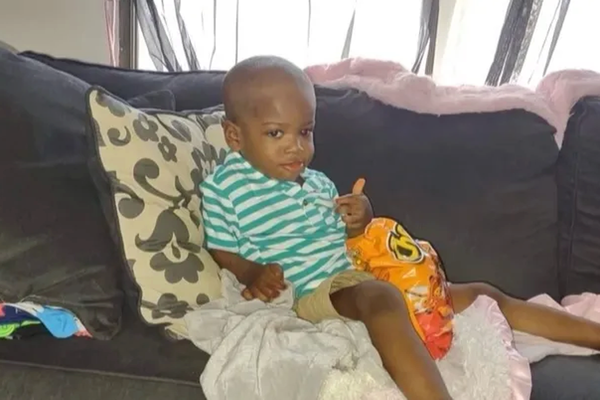RALEIGH, N.C. — Nowadays the creative process would be different and likely much more complicated. It would include consultants and focus groups and big-money market research. There’d be meetings about every little detail — the color and the curves; the shape of the fish’s eye and its grin. In time, Joe Kremer found amusement in the simplicity of it all, the origin story of a cartoon catfish.
“We laughed later, that people were spending thousands of dollars on marketing companies to create logos and it’d be a month-long process,” Kremer said during a recent interview. He’s retired now but for a long time was the general manager of the Carolina Mudcats. All the effort minor league baseball teams made to create a memorable logo, “and Frank did it in an hour,” Kremer said.
Maybe an hour and a half.
Frank was Frank Harrod. An artist who lived outside of Raleigh, who wore his hair in a long ponytail down his back. Who made his living painting commercial billboards that went up around town; who lived in what his brother, Gordon, described as “a real shack out in Knightdale,” and Gordon would know because he lived there, too, where he and Frank split $150 a month in rent.
Frank Harrod created a million-dollar piece of art, a logo that has endured for three decades. In an hour, maybe a little more, he drew something that made a fortune. Just not a fortune for himself.
Thirty years ago, the Carolina Mudcats began playing in Zebulon in Five County Stadium, where the suburbs east of Raleigh begin to give way to the flat farmland of rural eastern North Carolina. It was the spring of 1991. About 45 minutes west, the Durham Bulls had history and tradition and the national recognition that came with “Bull Durham,” released three years earlier.
And the Mudcats had, well — they had that quirky name and that fun logo: A droopy-eyed catfish, whiskers hanging low, tail curved in the back, wearing a goofy grin while it swam through the letter C, as if it wanted to say hello or receive a rub on the head or even a treat, like a dog ready to greet its owner. Muddy, the mascot came to be called.
Muddy the Mudcat. From Frank Harrod’s imagination to hats and shirts everywhere.
By the time the Mudcats began playing in North Carolina, the name and the logo were already in place. Steve Bryant, a Raleigh business owner, bought the franchise when it was based in Columbus, Ga., in 1988. The team was the Columbus Astros then but Bryant wanted something different — something imaginative. Something that’d make people smile.
“He didn’t want to be the Generals,” Kremer said. “He didn’t want to be the Storm.”
“Mudcats” was among the entries that came through in a naming contest. It won, finishing ahead of the runner-up choice of the “Scrambled Dogs,” a reference to a hot dog dish popular in parts of Georgia. With the new name, Bryant needed a new logo and new uniforms. He owned a billboard company in Zebulon. Harrod was among its painters, a natural artist, and Bryant knew his talent.
That was how it came to be that one day in 1989, Harrod found himself in Bryant’s office, drawing catfish. He’d sketch one, and then another, and send the drawings to Kremer, who received copies on the other end of a fax machine in Georgia.
“We’d look at it and say this or that,” Kremer said.
Throw a tail on there ... how about some whiskers ... can you make the grin a little goofier?
And then, like that, it was done. Bryant received a fish drawing that became an overnight sensation, a logo that during the past 30 years has often been among the most popular in minor league baseball, based on merchandise sales. Harrod received $500.
Soon, the Mudcats moved to Zebulon. They couldn’t restock the hats and shirts and everything else fast enough. Locals wanted them. Celebrities. The logo appeared on magazine covers. Muddy went big.
All the while Harrod lived not too far away in the shell of what used to be a country grocery store. By then, in 1991, Gordon Harrod had moved out, to the North Carolina mountains. Frank stayed behind. “Kind of a shack,” Gordon said, and he remembered one time Frank “got irritated with the power company” and stopped paying the bill and ran an extension cord from somewhere else.
“He just lived really simply,” Gordon said of his brother, and both men lived that way, driven not by a desire to make money but by the purpose to make art; to create things that might endure.
———
The monetary discrepancy did not bother Frank Harrod, that he received $500 (worth about $1,000 today with inflation) in exchange for a creation that made millions. His brother Gordon said, “I don’t think he was really bitter,” that instead “he was just more kind of proud and amused that the logo did so well and the team still existed.”
Besides, said Cindy Walker, Harrod never had much use for chasing profits, anyway.
“He used to worry about the selling out kind of thing, finding that sweet point of being able to do your art for money but not selling out,” Walker said. She’d come to know Harrod when she was in her 20s and they’d been romantically involved and had a son together. Instead of marrying, they remained lifelong friends.
“He struggled with that, I think,” she said of the thought of selling out, which to Harrod would have cheapened the meaning behind his work. And so maybe that was why it didn’t bother him that he received $500 to draw a logo that, for a time, was arguably the most popular of any minor league baseball team.
“It was the most I ever made off a logo,” Harrod told The News & Observer in a 1991 interview, during the Mudcats’ inaugural season in North Carolina. “I usually charge $250.”
The story noted that the team expected $500,000 in merchandise sales during that first season in Zebulon. Back then, Mudcats hats were everywhere. A photo emerged of Muhammad Ali wearing one. Former president Jimmy Carter. The logo made a brief cameo in “Space Jam,” and in the team offices there’s still a photo of another former president, George W. Bush, in a Mudcats hat.
Quirky team names have long become part of the fabric of minor league baseball, a contest of its own to come up with the most creative or different or attention-grabbing possible. The weirder the better, when it comes to the potential of merchandise sales. Among the top 25 minor league teams in merchandise sales in 2019, the most recent year available, were the Amarillo Sod Poodles and Fayetteville Woodpeckers and Hartford Yard Goats and Wisconsin Timber Rattlers.
The Mudcats were not on the list, and haven’t been since 2015 — a sign that the novelty has faded. After all, where is the place for a catfish in the time of the trash pandas? The newly-minted Rocket City Trash Pandas of Madison, Ala., are minor league baseball’s latest franchise of the moment — the ‘91 Mudcats of 2021. The logo for the Trash Pandas, a slang term for dumpster-diving raccoons, features a raccoon in a garbage can rocketing upward, presumably into space.
Greg Young, the director of marketing and broadcast media for the Mudcats, questioned whether colorful team names like the Trash Pandas would exist these days “if not for the success of the Mudcats. And not just the name Mudcats, but the logo itself.”
“It really brought about a whole new era,” he said.
In that way, Harrod created not just a logo but also an archetype; a blueprint for the clever and colorful logos that came to define minor league baseball throughout the 1990s and up to the present. Not that any of that was intentional.
At the time, drawing the Mudcats’ logo was just a gig like any other. People all over Raleigh were familiar with Harrod’s work, but did not know it. Among his work were billboards of the Budweiser Clydesdales that ran over Capital Blvd., and of the WRAL News team at the time. Gordon Harrod could still see the birds perched atop the head of Bob DeBardelaben, one of the network’s leading personalities, and the image made Gordon smile.
His brother was an oil painter but also “a master at pen and ink,” Gordon said, a savant with a Bic ballpoint pen. Frank Harrod was an artist, foremost, “but artists have to eat and live,” Gordon said, and so the Mudcats logo became another job — and one that Frank did not think much about.
“As an artist — like, nobody knows where this stuff is going,” said Gordon, who lives in the Asheville area and who has done commercial work himself — perhaps most notably the logo for the Green Man Brewery in Asheville. “Nobody knows if it’s going to blow up, if it’s going to collapse. If the team will last a year, or 30 years. Nobody knows any of that.
In hindsight, 30 years later, Gordon wishes his brother would’ve made a deal.
“It would have been a great deal,” Gordon said, “if you say, hey, how about you don’t pay me anything right now. But give me 1 percent of profits in perpetuity. He would’ve died a rich man. But, instead he did not. He did not die a rich man. He died poorly.”
———
Frank Harrod died in July 2019, at 63. Heart failure. He’d smoked for 30 years and suffered five heart attacks, his brother said, and undergone one quintuple bypass. He’d been doing OK for a while, “but heart disease doesn’t ever really go away,” Gordon said.
The picture that ran with the obituary shows a man with kind eyes, a warm smile and a long gray and white beard that stretches out of the photograph. He had been living in the mountains, around Asheville, for about 20 years, and if ever there was a man who embraced the look of the mountain artist, it was Frank.
His ties to the Mudcats, and to the famous logo he created, faded in time. In the 90s he showed up to Five County Stadium every now and then, Kremer said, and he didn’t have to pay for his beer. Sometimes he wore a Mudcats jacket. “He loved that jacket,” said Walker, Harrod’s lifelong friend. Besides the jacket, Walker said Harrod kept “maybe like a coffee cup or something” with the logo.
“But not a whole lot,” she said. “I mean, this is a guy that had like one bowl. He was a minimalist.”
For a long time, he rejected technology and modern comforts. As his brother put it, Frank “came into the 21st century kicking and screaming.”
“But in his later years he actually got a lot less angry about it — just became kind of a happy old man and just loved children and life,” Gordon Harrod said. “Listening to the birds sing.”
When he moved to the mountains, Frank gave up driving. His way of honoring the environment. He spent his days with his family — his son, Ian, and grandson, Leif. He made board games for the kids. Walker’s children — she married and had a family of her own — grew up with Frank in their lives, and at every gathering.
Not long ago, Walker was cleaning out Ian’s house, where Frank died. She cried.
“Everything was art” with Frank, she said, right down to his penmanship.
And artists, “they don’t always have the best business sense,” she said. “They just want to do the art so badly that they’ll do it, and not receive what they should.”
Later on, Walker said, she “was mad about it” — that Frank never received a cut of the logo’s success. She’d come across a Mudcats hat or a shirt somewhere and wonder how even a small percentage of it might’ve helped him survive. The medical bills piled up in his later years and Frank “was pretty impoverished in the end,” she said.
But then there was the other side: “To have his art so widely distributed, for an artist — that’s a wonderful thing,” Walker said. Frank Harrod was a surrealist — he loved Dali — and his work, that which he was most passionate about, transported people to a different realm. In a sense, so did a cartoon of a catfish that he sketched out in an hour or so.
It brought joy to baseball fans. It put a small-town minor league baseball team on the map. For a time, it was arguably the most popular minor league baseball logo anywhere, and “he was proud of it,” Gordon said, though he knew his brother understood the artist’s reality: That artists don’t get to decide which of their pieces endure.
“His real artwork was so incredible,” Gordon said, “and it’s just kind of funny when you become famous for some little doodle — this little logo that you did for somebody, that took a few hours, becomes your most famous artwork. There’s a lot of irony in that.”
In some ways, it is difficult to quantify the financial success of the Mudcats’ logo since the franchise arrived in North Carolina 30 years ago. Asked if it’d be fair to say that the logo had generated tens of millions of dollars, Kremer, the team’s former general manager, paused to do the math in his head: “Thirty years? Yeah — you could say that,” he said.
In the interview with The N&O in 1991, Frank Harrod said it bothered him “a little bit” that he would not realize the financial gains of his creation. But then again, he said, “that’s what artists do best in this country, make money for other people.”
While Mudcats gear continued to be among the most popular in minor league baseball, Harrod continued to live in the shack. The billboard business dried up, in time, when advancements in printing made painters obsolete. Harrod worked odd jobs, installed wallpaper. He never stopped creating art.
He moved to the mountains to be closer to family. At his wake after he died, people decorated a house in his artwork — “a beautiful thing,” his brother said. He died a poor man, monetarily, but rich in relationships and fulfillment. And besides, not long ago Gordon remembered one of his brother’s favorite sayings, something of a mantra that spoke to why it didn’t bother Frank Harrod that he made very little off of his million-dollar creation.
“He was happiest when he was broke.”







